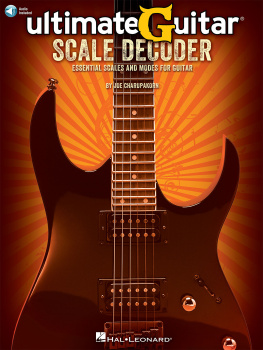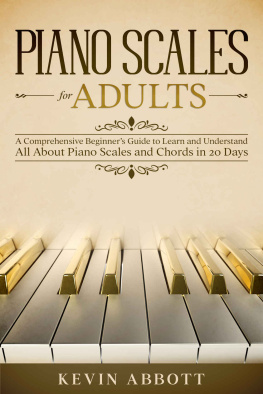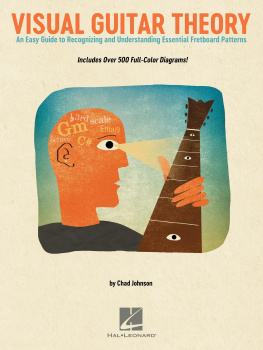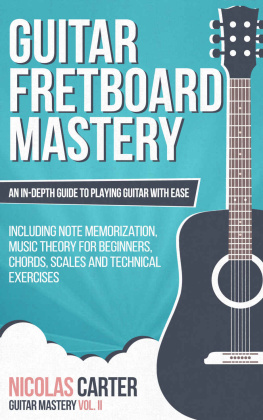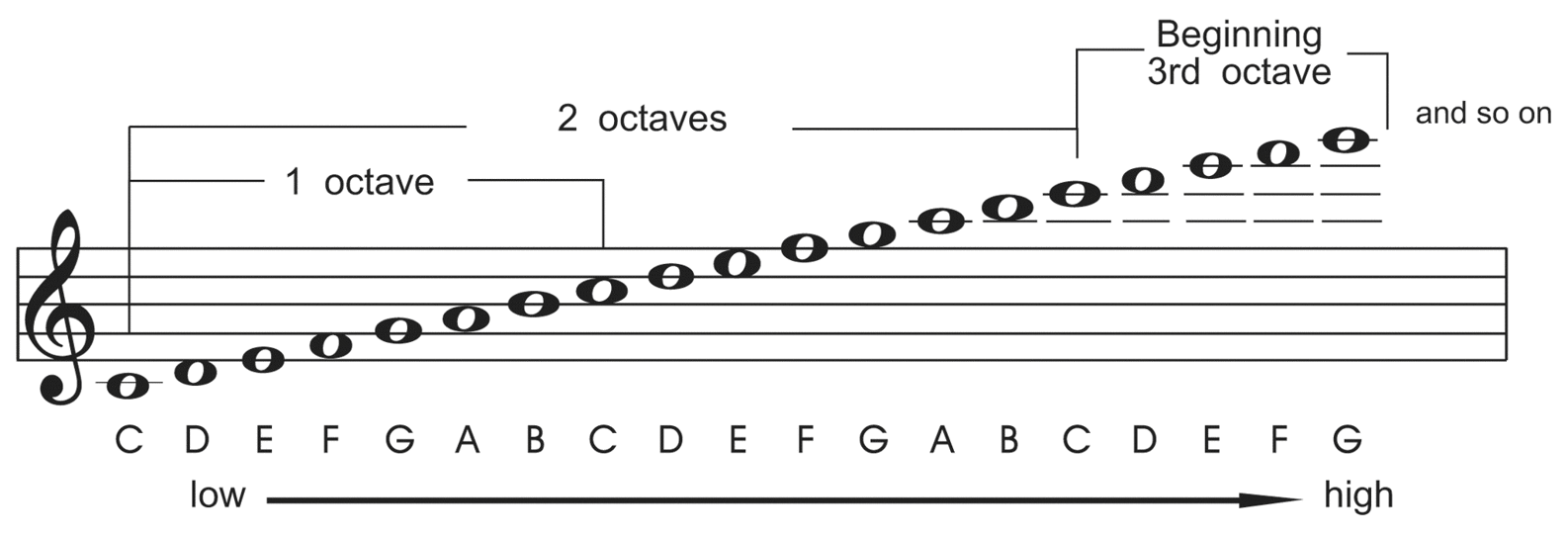Introduction
Scales For Guitar is a unique approach to learning scales. It is presented in a logical step-by-step format leading to a "practical" understanding of one area of guitar study by building a solid foundation, both in practical hands-on application and an understanding of the theory behind it.
This approach can be used for self-guided study or as a teaching method for instructors. Each page is presented as a lesson and is visually clear with tips and background.
How to Practice
When you begin to practice scales take the following to heart and you will save yourself a lot of frustration and wasted time.
Practicing is programming your body to repeat exactly what you are putting in, automatically. If you are putting in mistakes your body will remember those with the same efficiency as correct notes, so please follow this type of routine.
- Choose a task to practice and allow a time frame for it, let's say 10 minutes.
- Play the exercise only at a speed (tempo) at which you are not making mistakes!
- Continue to repeat the scale as you would repetitions of push-ups or sit-ups, consider it an exercise. Repetitions should be done slowly and accurately with concentration. Follow fingerings carefully and keep them identical ascending and descending.
- If you get bored or tired stop and go on to something else. Be able to concentrate for the duration of the time frame. Remember, you are also working on your ability to concentrate. Everything that is worthwhile takes discipline and care.
- Make sure your guitar is in tune. If it isn't you are sending you ears all sorts of wrong information. If you are unsure, find someone who can help you tune your guitar accurately.
This is a tried and true and accepted method; if you follow it diligently YOU WILL SEE RESULTS. Enjoy the process!
For more in this series visit .
Task - Timeframe - Concentration - Repetition
Introduction to Scales
Virtually all music you listen to is in one way or another based on scales. Scales are a way of organizing notes so that they make musical sense to our ears. Over centuries scales and their use have developed into what we now accept as certain norms for our music in western culture.
There are scores of different kinds of scales: major, minor, pentatonic, whole tone, diminished, modes, and more exotic ones such as tone rows, blues, modes, altered chord scales, and on and on.
What we are primarily concerned with in this book is to give the student a "practical" understanding of scales, not only providing a basic working knowledge of how scales are formed, but how to use them in an improvisational context as well.
Exercises presented in this book will also be very useful to the classical student who wishes to have a comprehensive understanding of fretboard harmony and mechanics.
Scales work as systems and the guitar fretboard is efficiently organized by those systems. Harmony combines scale notes into interval and chord sounds. Together, these melodic and harmonic relationships provide us with the raw materials for music making.
How Scales Work on the Guitar Fretboard
A scale is a group of related notes organized in an ascending or descending order from a starting note, in other words, a ladder of notes. The two most common scale sounds are called major and minor. The difference between these two scale sounds is in the distances between the notes. In this book, we will be dealing with both major and minor scale sounds.
The most common scale sound is the do re mi fa so la ti do scale, the major scale. In order to come to a more complete understanding of what that means we must examine the notes' relationships to each other, for example, from do to re, or from ti to do.
Let's write down a representation of the scale in music notation, starting on the "root" note C.

C to D on the guitar fretboard is 2 frets, this distance is referred to as a "tone." D to E is also 2 frets, also a "tone." E to F is only a single fret distance. This is a "semi-tone" or half a tone. F to G is a tone, G to A is a tone, A to B is a tone and once again, B to C is a semi-tone.
Therefore, a major scale is made up of the following distances between the notes.
Tone, Tone, Semi-tone, Tone, Tone, Tone, Semi-tone
The C Major Scale
So this can be said about a major scale; it is a tone, tone, semi-tone, tone, tone, tone, semi-tone scale. This pattern of distances can start from any given note. If we start on a C note (TTSTTTS) we call that scale C major. If we begin those same distances starting on a G note, G major, from D, D major and so on. The notes will be different but the distances between the notes will be the same.
This can be illustrated by playing a major scale on a single string. Starting on the open high E string, play the TTSTTTS relationship. Don't worry about fingering for now. Just use finger 1, the index finger.
This is an E major scale. It is not all that practical, but it does demonstrate the principle of constructing a scale. Do the same exercise starting on any note. Remember that the starting note names the scale. Two common names for the starting note are "root" and "tonic."
The starting note or root note is the gravitational centre of the scale, and the other notes are attracted to the tonic or "key" centre. The C scale is said to be in the "key of C." The E scale, in the "key of E" and so on.
I hope this helps to clear up in your mind what a scale is: a group of notes organized by distances in an ascending or descending order from a starting note or tonal centre or "key" centre.
Let's examine how these relationships of notes are expressed on the guitar fretboard.
First, there are only seven different notes in this scale with the repeat of the first note completing the scale; this distance of eight notes is called an "octave."
These notes can be continued through several octaves depending on the range of the instrument. Notice that the notes have the same letter names, but are played in different octaves.
Scales are often practiced starting on the root note, then ascending through 1 or 2 or 3 octaves and then descending in the same order back to the tonic. This is good practice and will be discussed in greater detail later.
What we will examine now is the location of all the notes of the C major scale on the fretboard. But first, a few questions.
Section One Questions
- What is a scale?
- What is a tone?
- What is a semi-tone?
- How many notes in a one-octave major scale?
- How many different notes in a major scale?
- What are the two most common scale sounds?
- Write a major scale according to distances only
- What does "root" mean?








